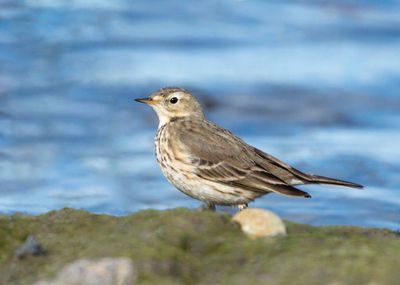ISSS608 2016-17 T3 Assign KISHAN BHARADWAJ SHRIDHAR
Contents
Visual Analytics Science and Technology Challenge
The story of the blue pipit and why is it disappearing?
Welcome to the story of the Rose crested Blue Pipit, which thrives in the Boonsong Lekagul wildlife preserve.
Well, it used to "thrive", but something inside the wildlife preserve shows us that all is not well with the wonderful birds. Is there a way to use data to visualize what is happening? Can a visual detective uncover something before it is too late?
Before you jump right in, I would like to share with you pointers which will help you follow this story better. The panels below help you follow the analysis, but I would recommend you may first want to read on below to know more on the context behind this analysis.
| Data | Ground report | Story unfolds! | Impact |
The Data panel explains the elements of the data, and where they will be used, and how to tweak this data set according to the needs.
The Ground Report panel will elaborate on the patterns of life analysis that occur daily, and what tools were used to achieve it.
This will provide answers to Q1 below.
The Story Unfolds! panel specifically answers Q2, and from the analysis of Q1 & Q2, devises what can potentially be unusual patterns that happen inside the preserve to answer Q3.
The Impact panel summarises all findings for Q4, in addition to providing a storyboard for the user to follow the flow of the analyses. The interactive dashboard visualisation can also be found there.
Problem Context:
The report here outlines the work carried out in response to the VAST challenge 2017, Mini Challenge #1 [1]
Mistford is a mid-size city is located to the southwest of a large nature preserve. The city has a small industrial area with four light-manufacturing endeavors. Mitch Vogel is a post-doc student studying ornithology at Mistford College and has been discovering signs that the number of nesting pairs of the Rose-Crested Blue Pipit, a popular local bird due to its attractive plumage and pleasant songs, is decreasing! The decrease is sufficiently significant that the Pangera Ornithology Conservation Society decides to sponsor Mitch to undertake additional studies to identify the possible reasons.
In this scenario, I don the role of Mitch Vogel to use the datasets provided to solve a specific issue related to the above scenario. Visual analytics will be used to uncover potentially interesting patterns that will help to solve the crises, and discover some previously unknown factors.
Problem Statement:
The Boonsong Lekagul Nature Preserve is used by local residents and tourists for day-trips, overnight camping or sometimes just passing through to access main thoroughfares on the opposite sides of the preserve. The entrance booths of the preserve are monitored in order to generate revenue as well as monitor usage. Vehicles entering and exiting the preserve must pay a fee based on their number of axles (personal auto, recreational trailer, semi-trailer, etc.). This generates a data stream with entry/exit timestamps and vehicle type. There are also other locations in the part that register traffic passing through. While hiking through the various parts of the preserve, Mitch has noticed some odd behaviors of vehicles that he doesn’t think are consistent with the kinds of park visitors he would expect. The analysis would devise a way in which Mitch can decipher the behaviour of the vehicles of the park, by providing answers to the below questions.
Q1. “Patterns of Life” analyses depend on recognizing repeating patterns of activities by individuals or groups. Describe up to six daily patterns of life by vehicles traveling through and within the park. Characterize the patterns by describing the kinds of vehicles participating, their spatial activities (where do they go?), their temporal activities (when does the pattern happen?), and provide a hypothesis of what the pattern represents. (for example, if I drove to a coffee house every morning, but did not stay for long, you might hypothesize I’m getting coffee “to-go”)
Q2. Patterns of Life analyses may also depend on understanding what patterns appear over longer periods of time (in this case, over multiple days). Describe up to six patterns of life that occur over multiple days (including across the entire data set) by vehicles traveling through and within the park. Characterize the patterns by describing the kinds of vehicles participating, their spatial activities (where do they go?), their temporal activities (when does the pattern happen?), and provide a hypothesis of what the pattern represents (for example, many vehicles showing up at the same location each Saturday at the same time may suggest some activity occurring there each Saturday).
Q3. Unusual patterns may be patterns of activity that changes from an established pattern, or are just difficult to explain from what you know of a situation. Describe up to six unusual patterns (either single day or multiple days) and highlight why you find them unusual.
Q4. What are the top 3 patterns you discovered that you suspect could be most impactful to bird life in the nature preserve?
Now, you may kindly refer to the panels above to follow the analysis performed.
Thank you for taking the time to visit this page! Hope you found it interesting. Please leave your comments below.
Comments
- INSERT FEEDBACK COMMENTS HERE. THANK YOU
